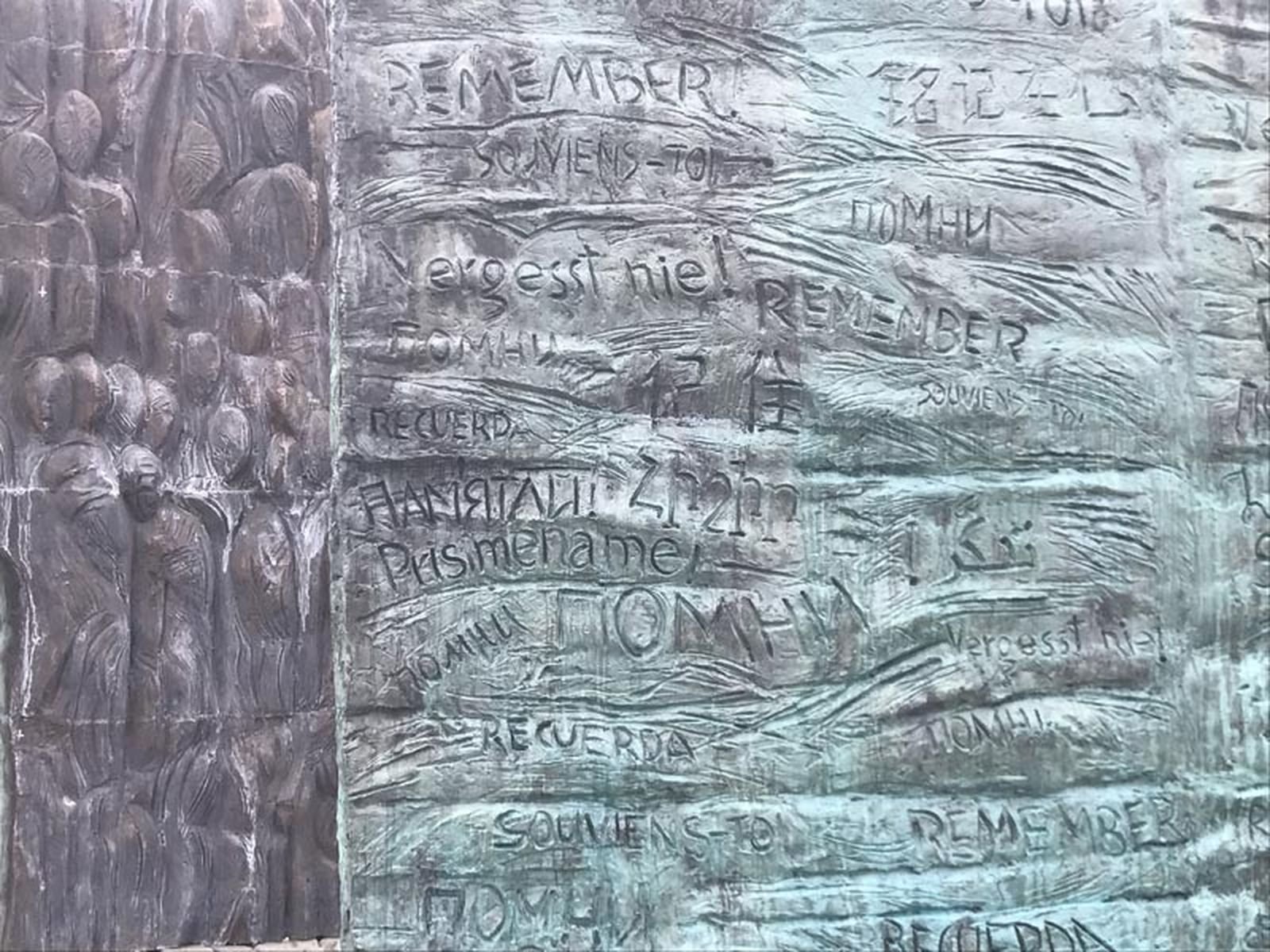The Wall Of Sorrow
2017
Georgy Frangulyan with architect Andrey Frangulyan
Bronze
Multiple elements and dimensions, 32 x 6 m (105 ft. x 19 ft. 6 in.)
Commissioned by the Remembrance Foundation
Moscow
In 2015 the Gulag History Museum held an open competition for the right to create a monument commemorating the victims of Stalin’s repression. In all, 336 applications were submitted.
The applications were evaluated by a jury made up of cultural figures and representatives of public organizations. Among them were human rights activists Lyudmila Alekseeva, Alexei Simonov, Alla Gerber, and Arseny Roginsky, writer Daniil Granin, president of the Solzhenitsyn Foundation Natalia Solzhenitsyna, editor-in-chief of the Novaya Gazeta newspaper Dmitry Muratov, and filmmakers Stanislav Govorukhin, Pavel Lungin, Vladimir Bortko, Sergey Miroshnichenko, and others.
Frangulyan’s winning entry consists of a curved wall that bisects the site on a near-diagonal. Measuring 32 meters (105 feet) long and six meters (19.6 feet) high the Wall of Sorrow is an atmospheric two-sided relief composed of a seemingly infinite number of modeled human figures striving schematically upward. Breaks in the silhouettes leave room for those who had survived the meatgrinder of tyranny. Passing through them, people are able to feel that they are in the place of those who had become part of the wall of sorrow. They can sense the fragility of human life in the face of a vast and merciless juggernaut; to realize that the frozen wave could start moving again, crushing all that it meets on its way, turning people into shadows.
The movement captured by the monument amid the rapid stream of activity along the Garden Ring is like a bright flash from the past, an instant snapshot of a monumental tragedy. Georgy Frangulyan wants the monument to be a warning to subsequent generations that the tragic consequences of despotism concern everyone and can become reality again.
"I would like for every piece of cast bronze to radiate a feeling of tragedy. The figures in The Wall of Sorrow are faceless, to reflect the vast numbers of people who were victimized. Now, their twisted fates and their faces, eliminated from the book of life, have become symbols of tragedy. A form that does not have an exact outline sparks anxiety and sorrow. The monument's mixed color scheme, in combination with its shapes, will create the sensation we're after" says Georgy Frangulyan.
"The shape of the monument should convey to the viewer the very feeling of the roar of terror, the sinister gnashing and grinding of evil. I want to express the fact that we, the people living today, are also victims of the repressions of years past. Our lives could have turned out differently: better, worse-differently. We carry this within ourselves all the same. Each of us bears a fragment of this wall within. And it's not at all clear how long it will take for it to go away" says Frangulyan, expounding on his authorial intent.
Before the monument there are 7 granite pillars with spotlights directed into the sky. As intended by the sculptor, the light from these spotlights personifies the souls of the murdered.














